Yaseen & Party 60’s taarab compilation from Yaseen Mohamed Afro7

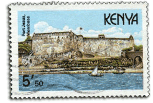
![]() ‘Harambe’ by Mac & Party was one of the most interesting recent rediscoveries of Kenyan taarab from the past decades. An English language taarab song with the prominent presence of an early synthesizer, it sounded unlike any other Kenyan music that came out during the 1960s and ‘70s. Initially, when trying to license the track for reissue in 2016 (Soundway’s ‘Kenya Special volume 2’ and the 45 RPM reissue on Afro7), we didn’t have much luck in finding out who had recorded and composed the song, or even when exactly it had come out. Comparing discographies of the original label, and
‘Harambe’ by Mac & Party was one of the most interesting recent rediscoveries of Kenyan taarab from the past decades. An English language taarab song with the prominent presence of an early synthesizer, it sounded unlike any other Kenyan music that came out during the 1960s and ‘70s. Initially, when trying to license the track for reissue in 2016 (Soundway’s ‘Kenya Special volume 2’ and the 45 RPM reissue on Afro7), we didn’t have much luck in finding out who had recorded and composed the song, or even when exactly it had come out. Comparing discographies of the original label, and 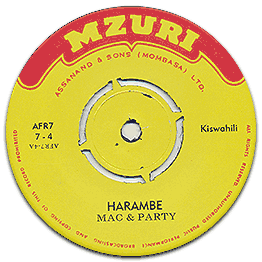
![]() listening to other songs that were close enough by catalogue numbers, it appeared to be the work of the late singer/composer Yaseen Mohamed. His sons were able to confirm that it was their father singing on those singles, that Mac & Party and Yaseen & Party were most likely the same band, and that the recordings were done in the early ‘60s.
listening to other songs that were close enough by catalogue numbers, it appeared to be the work of the late singer/composer Yaseen Mohamed. His sons were able to confirm that it was their father singing on those singles, that Mac & Party and Yaseen & Party were most likely the same band, and that the recordings were done in the early ‘60s.
A closer look at Yaseen Mohamed’s legacy reveals that he was an important figure in Kenya’s taarab music of the 20th century. Between his first 78 RPM record, which came out around 1947, and the last single released in the mid-sixties, his discography spans nearly 50 confirmed releases, and possibly many more collaborations that he was not credited for.
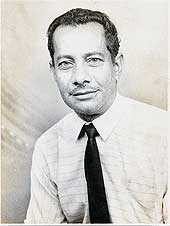 Yaseen was born in Mombasa in the 1920s. His parents were of Omani heritage. Growing up he joined the British colonial army, which allowed him to travel around the region and soak up a wide variety of cultural influences. During Yaseen’s youth, recorded taarab music had become popular across the region, pioneered by a group of musicians from Zanzibar whose musical output from the late ’20s and early ’30s set a trend.
Yaseen was born in Mombasa in the 1920s. His parents were of Omani heritage. Growing up he joined the British colonial army, which allowed him to travel around the region and soak up a wide variety of cultural influences. During Yaseen’s youth, recorded taarab music had become popular across the region, pioneered by a group of musicians from Zanzibar whose musical output from the late ’20s and early ’30s set a trend.
Socio-economic changes in the colony during the 20th century, which transformed Mombasa from a Swahili town of less than 30,000 people, reigned by the sultan of Zanzibar, into a metropole in the newly independent country of Kenya, had a major impact on music culture. These changes were mirrored in the evolution of taarab between the 1920s and ‘60s. Yaseen’s early work is a patchwork of stylistic influences from Indian and Egyptian film melodies, Cuban son, and trendy dance styles such as the twist, mambo and samba, all thrown in the mix with a traditional taarab combo line-up of vocals, ud and percussion. He would later be quoted as saying that “there is no certain thing which is taarab. Even rock is taarab if people just sit and listen”.

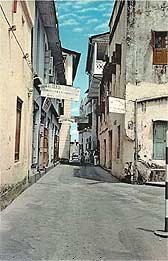 By the early ‘50s, Yaseen had joined Assanand & Sons (Mombasa) Ltd., a shop selling musical instruments and 78 RPM records, which was quickly being developed into Mombasa’s most popular music studio. Yaseen was an all-round member on the team, recording his own music, performing as a session musician, acting as a studio technician, and scouting new talent for Mzuri, the in-house label. Apart from singing and composing he became a master of the taishokoto, a musical instrument of Japanese origin which was introduced in Kenya in the 1940s. During this time he started recording with his wife Saada (credited on releases as ‘Mimi’), who joined him on the stage during live
By the early ‘50s, Yaseen had joined Assanand & Sons (Mombasa) Ltd., a shop selling musical instruments and 78 RPM records, which was quickly being developed into Mombasa’s most popular music studio. Yaseen was an all-round member on the team, recording his own music, performing as a session musician, acting as a studio technician, and scouting new talent for Mzuri, the in-house label. Apart from singing and composing he became a master of the taishokoto, a musical instrument of Japanese origin which was introduced in Kenya in the 1940s. During this time he started recording with his wife Saada (credited on releases as ‘Mimi’), who joined him on the stage during live  single mic set up in the storage room at the back of the Assanand shop.
single mic set up in the storage room at the back of the Assanand shop.
Yaseen, Mimi and their band were at the forefront of innovation in Mombasa taarab; their small-band approach with newly introduced instruments such as the (amplified) taishokoto, accordion, and the Clavioline, a predecessor of the synthesizer, sounded quite different from the big-band taarab approach of orchestras that were around during the 1940s and ‘50s. Their short songs (limited to 3 minutes per side for 78 RPM releases, and a bit longer when Mzuri started pressing on 45 RPM singles) appeared easy on the ear, but the lyrics were rooted in the intricate Swahili poetry that had been popular among the East African coast for centuries.
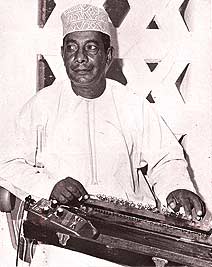 In 1962, Yaseen and Mimi got their first child, a milestone described in ‘Nimepata mwana’. From then on, Yaseen focused on working regular jobs, while music remained a hobby. They struggled to make ends meet though, living with their four children in a single-room apartment in Mombasa’s inner city. While Yaseen was of Omani heritage, Mimi’s parents were Digo, a people from coastal Kenya who were discriminated against during the colonial era. Yaseen’s close family didn’t accept Mimi and her kids into the family. In 1972, Yaseen left Mimi and the children to take up work in Oman, which had just started a transition from one of the middle east’s most traditional societies into a modern Arab oil-fuelled economy. Yaseen’s professional skills as an electrician and a mechanic were welcomed as he joined thousands from the Omani diaspora in East Africa in occupying the work force. Despite continuing to make music in his pastime, performing on national television and radio with his taishokoto, and composing a song for sultan Qaboos, he didn’t record any more music. Yaseen returned to Mombasa to visit his wife and sons every few years, and he intended to retire bring the family over to Oman, but he passed away in 1985. By that time, the Mzuri label and Assanand shop were long gone, and the production of taarab in Kenya had started a decline that has nearly decimated the Mombasa scene by 2019. A few of Yaseen’s songs were featured on foreign compilations, some of his recordings can be found on bootleg CDs in Mombasa, but only some of the older generation
In 1962, Yaseen and Mimi got their first child, a milestone described in ‘Nimepata mwana’. From then on, Yaseen focused on working regular jobs, while music remained a hobby. They struggled to make ends meet though, living with their four children in a single-room apartment in Mombasa’s inner city. While Yaseen was of Omani heritage, Mimi’s parents were Digo, a people from coastal Kenya who were discriminated against during the colonial era. Yaseen’s close family didn’t accept Mimi and her kids into the family. In 1972, Yaseen left Mimi and the children to take up work in Oman, which had just started a transition from one of the middle east’s most traditional societies into a modern Arab oil-fuelled economy. Yaseen’s professional skills as an electrician and a mechanic were welcomed as he joined thousands from the Omani diaspora in East Africa in occupying the work force. Despite continuing to make music in his pastime, performing on national television and radio with his taishokoto, and composing a song for sultan Qaboos, he didn’t record any more music. Yaseen returned to Mombasa to visit his wife and sons every few years, and he intended to retire bring the family over to Oman, but he passed away in 1985. By that time, the Mzuri label and Assanand shop were long gone, and the production of taarab in Kenya had started a decline that has nearly decimated the Mombasa scene by 2019. A few of Yaseen’s songs were featured on foreign compilations, some of his recordings can be found on bootleg CDs in Mombasa, but only some of the older generation 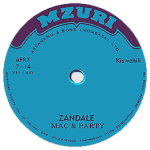
![]() in Kenya are aware of the remarkable legacy and the impact that Yaseen and his wife have had on Kenya’s coastal music.
in Kenya are aware of the remarkable legacy and the impact that Yaseen and his wife have had on Kenya’s coastal music.
The full album LP with 4-page fold-out insert with extended liner notes and the single can be bought seperate through our music shop, with reasonable worldwide shipping prices, use this link to buy directly from us, we also have other Afro7 releases available.
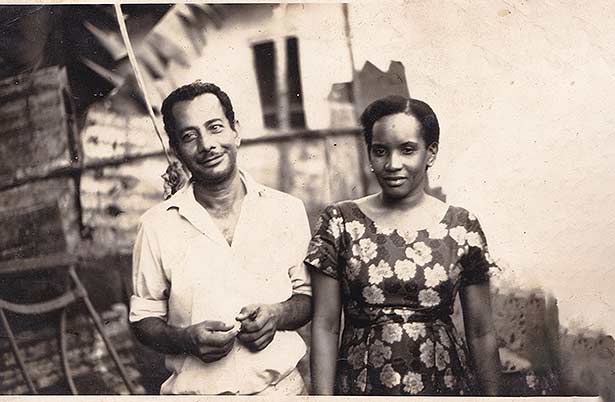
|
LINK TO SONG SNIPPETS from the Single Mac & Party Zandale and Kiss to Kiss single |
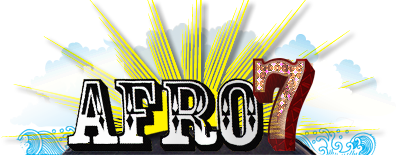
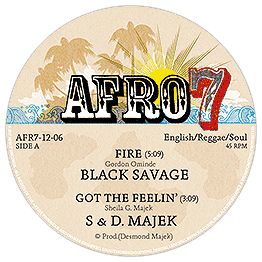
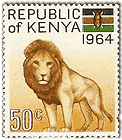
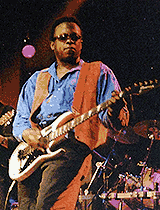 Let me tell you about this one: the label these songs originally came out on was
Let me tell you about this one: the label these songs originally came out on was 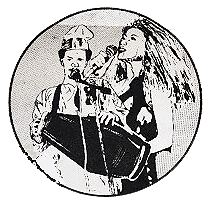 In the early years of CBS Kenya, before the ‘Fire’ single was released, Nigerian Desmond Majekodunmi was at the production helm running the CBS recording facilities. His Nigerian/American wife Sheila was a profiled singer in Nairobi at the time and the couple had several recording dates in Kenya. We’ve picked one that has a slightly quirky disco backing, but with the great voice of Sheila Majekodunmi in front. Read the full story of the Majeks
In the early years of CBS Kenya, before the ‘Fire’ single was released, Nigerian Desmond Majekodunmi was at the production helm running the CBS recording facilities. His Nigerian/American wife Sheila was a profiled singer in Nairobi at the time and the couple had several recording dates in Kenya. We’ve picked one that has a slightly quirky disco backing, but with the great voice of Sheila Majekodunmi in front. Read the full story of the Majeks 
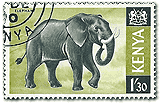
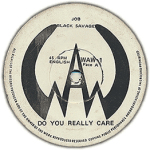 One band whose recorded output has been all but invisible until recently, but who are well remembered by people who were young in 1970s Nairobi, is Black Savage. Their music was released on an LP and three singles between the mid-70s and the early 80s, and has remained out of print ever after. The early years of the band, whose members met during their secondary school years in Nairobi, are well described in the liner notes accompanying the current reissue compilation by Afro7. Band leader Gordon was the son of professor Simeon Ominde, who had led the reform of Kenya’s educational system in 1964 upon independence, and who was teaching at Makerere University in Uganda in 1956 when his son was born. Gordon Ominde’s earliest memories included Louis Armstrong’s concert in Kampala in 1961, where – at the age of four – he was invited on stage and started conducting the band. Musical inspiration also came from his sisters who were singers, and from attending musical classes, although at Lenana – a former whites-only boarding school which was gradually being reformed to cater to Kenyans of different backgrounds – music education meant studying Beethoven and Mozart. Together with a group of younger students who shared an interest in music, including original Black Savage members Job Seda, Jack Otieno and Ali Nassir, he started practice sessions using the musical instruments that the school provided. After completing school the band decided to rejoin and pursue a career in music, despite all odds: obtaining their own instruments, finding rehearsal space and getting the approval of their families would all have been challenges in mid-seventies Kenya.
One band whose recorded output has been all but invisible until recently, but who are well remembered by people who were young in 1970s Nairobi, is Black Savage. Their music was released on an LP and three singles between the mid-70s and the early 80s, and has remained out of print ever after. The early years of the band, whose members met during their secondary school years in Nairobi, are well described in the liner notes accompanying the current reissue compilation by Afro7. Band leader Gordon was the son of professor Simeon Ominde, who had led the reform of Kenya’s educational system in 1964 upon independence, and who was teaching at Makerere University in Uganda in 1956 when his son was born. Gordon Ominde’s earliest memories included Louis Armstrong’s concert in Kampala in 1961, where – at the age of four – he was invited on stage and started conducting the band. Musical inspiration also came from his sisters who were singers, and from attending musical classes, although at Lenana – a former whites-only boarding school which was gradually being reformed to cater to Kenyans of different backgrounds – music education meant studying Beethoven and Mozart. Together with a group of younger students who shared an interest in music, including original Black Savage members Job Seda, Jack Otieno and Ali Nassir, he started practice sessions using the musical instruments that the school provided. After completing school the band decided to rejoin and pursue a career in music, despite all odds: obtaining their own instruments, finding rehearsal space and getting the approval of their families would all have been challenges in mid-seventies Kenya.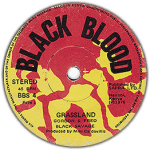 In 1973, two Kenyans of Indian heritage who had run a successful photo business since the mid-50s, gave Kenyan music a boost by investing in a 24-track recording studio, and by acquiring EMI, Pathé and other label licenses for recording and distributing local and international music. In the next few years the Sapra studio, record plant, tape duplication facility and colour printing business would become the go-to spot in Nairobi’s Industrial Area for musicians and labels from all around East Africa. The studio was built and – as the owners struggled to find a sufficiently trained local engineer – also run by Detlef Degener, a German who had come to Kenya to construct studios for training journalists. Between 1975 when Sapra studio opened and the end of 1978 when the company went bankrupt, he recorded hundreds of bands from as far as Zambia (many Zamrock albums were produced under his guidance). Black Savage also came to record at Sapra for their debut album, which was to be released by EMI.
In 1973, two Kenyans of Indian heritage who had run a successful photo business since the mid-50s, gave Kenyan music a boost by investing in a 24-track recording studio, and by acquiring EMI, Pathé and other label licenses for recording and distributing local and international music. In the next few years the Sapra studio, record plant, tape duplication facility and colour printing business would become the go-to spot in Nairobi’s Industrial Area for musicians and labels from all around East Africa. The studio was built and – as the owners struggled to find a sufficiently trained local engineer – also run by Detlef Degener, a German who had come to Kenya to construct studios for training journalists. Between 1975 when Sapra studio opened and the end of 1978 when the company went bankrupt, he recorded hundreds of bands from as far as Zambia (many Zamrock albums were produced under his guidance). Black Savage also came to record at Sapra for their debut album, which was to be released by EMI. ‘Something for someone’ provides a refreshing look at Kenya’s musical landscape of the mid-seventies. Black Savage weren’t drawing their primary influence from rumba or benga but from psych and folk rock, funk and r&b. All songs were in English, and the lyrics were politically and socially aware, breathing the activist vibe of the international ‘summer of love’ generation. The band released three more singles. ‘Do you really care/Save the savage’ is two sides of semi-acoustic protest folk, ‘Grassland/Kothbiro’ embraces the group’s Kenyan identity through the music and language, and ‘Fire/Rita’ (released around 1982 on the short-lived Kenyan CBS label) sounds as if the group attempts to reinvent itself – as a reggae band.
‘Something for someone’ provides a refreshing look at Kenya’s musical landscape of the mid-seventies. Black Savage weren’t drawing their primary influence from rumba or benga but from psych and folk rock, funk and r&b. All songs were in English, and the lyrics were politically and socially aware, breathing the activist vibe of the international ‘summer of love’ generation. The band released three more singles. ‘Do you really care/Save the savage’ is two sides of semi-acoustic protest folk, ‘Grassland/Kothbiro’ embraces the group’s Kenyan identity through the music and language, and ‘Fire/Rita’ (released around 1982 on the short-lived Kenyan CBS label) sounds as if the group attempts to reinvent itself – as a reggae band. Jack Otieno (today known as Jack Odongo) joined the African Heritage Band. Job then became an actor (Out of Africa), joined the UK record label Real World and scored Hollywood soundtracks. Jack went on to produce numerous Kenyan bands throughout the 1980s and 90s, and is still active as a gospel musician. Gordon Ominde continued his studies but ultimately chose for a career as a musician, and his music took him to England and to Germany where he started a family; he died unexpectedly in 2000. Mbarak Achieng is credit for composing Black Savage’s Kothbiro, which Ayub Ogada re-recorded and which ended on the soundtrack of the Constant Gardener. The memory of Black Savage as Kenya’s most prolific rockers of the 1970s remains vivid in the hearts of thousands of Nairobians, and the current Afro7 reissue is a worthy first attempt at introducing their best work to an international audience.
Jack Otieno (today known as Jack Odongo) joined the African Heritage Band. Job then became an actor (Out of Africa), joined the UK record label Real World and scored Hollywood soundtracks. Jack went on to produce numerous Kenyan bands throughout the 1980s and 90s, and is still active as a gospel musician. Gordon Ominde continued his studies but ultimately chose for a career as a musician, and his music took him to England and to Germany where he started a family; he died unexpectedly in 2000. Mbarak Achieng is credit for composing Black Savage’s Kothbiro, which Ayub Ogada re-recorded and which ended on the soundtrack of the Constant Gardener. The memory of Black Savage as Kenya’s most prolific rockers of the 1970s remains vivid in the hearts of thousands of Nairobians, and the current Afro7 reissue is a worthy first attempt at introducing their best work to an international audience.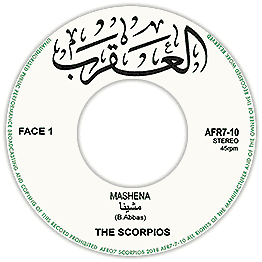
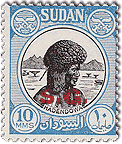
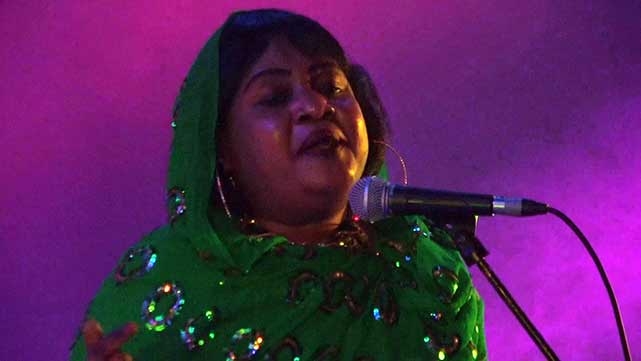
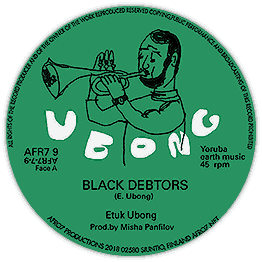

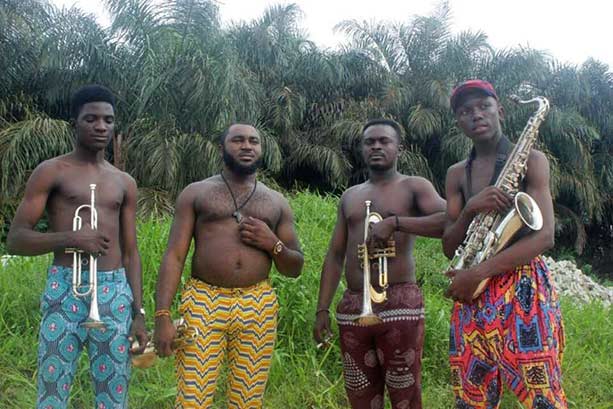
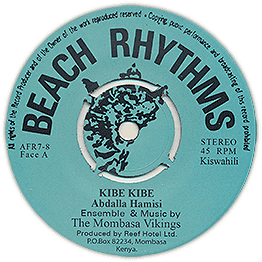

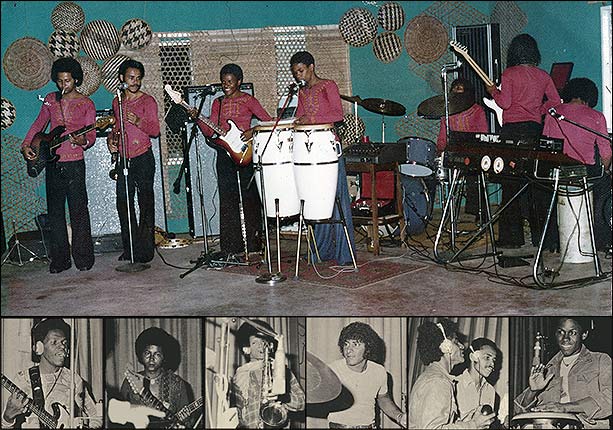
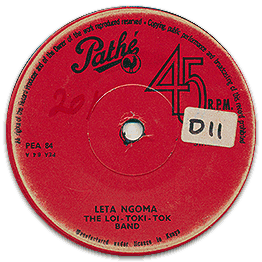
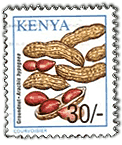 Happy summer! We are have been working hard to update the site to be more mobile friendly and will keep adding more vintage stock throughout the year! Keep coming back in!
Happy summer! We are have been working hard to update the site to be more mobile friendly and will keep adding more vintage stock throughout the year! Keep coming back in!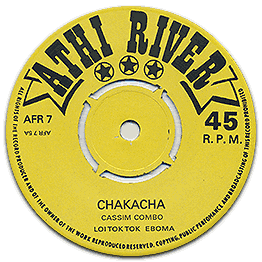
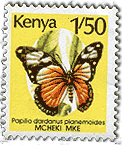
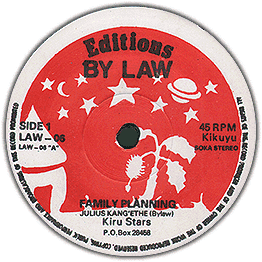
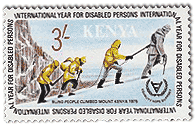 “One of the best Kikuyu disco tracks I’ve ever heard…!” Rickard Masip said having found few copies of ‘Family Planning’ on his last trip to Kenya in 2013. Often the continuing search for something fresh and original can be a striving fare, especially when you have to look through thousand and thousands of dirty old singles. Even though there are many Kikuyu Benga singles, few have the magnitude of By Law’s KIRU1 and KIRU6. Over a hypnotizing groove with a heavy backbeat, Family planning tells us the story of a family dispute between husband and wife, set in a traditional Kikuyu rural setting. The bone of contention in the marriage is that the wife has had enough with giving birth to more kids. They have 8 kids so far but the arrogant and rude husband is still not satisfied and wants more. Though grim it may seem the outfall is the man accept the humble argument of the wife. Notice the slight shift to a more Soukouss driven beat towards the end of the track. The bass heavy ‘Mumbi’ is in more positive fashion a classic love song about the authors passion for a woman he named the song after. He goes on tour to Nyeri where she is from and tells all the other guys to lay off his true love. Massive thanks to Moses Mungai for the translation!
“One of the best Kikuyu disco tracks I’ve ever heard…!” Rickard Masip said having found few copies of ‘Family Planning’ on his last trip to Kenya in 2013. Often the continuing search for something fresh and original can be a striving fare, especially when you have to look through thousand and thousands of dirty old singles. Even though there are many Kikuyu Benga singles, few have the magnitude of By Law’s KIRU1 and KIRU6. Over a hypnotizing groove with a heavy backbeat, Family planning tells us the story of a family dispute between husband and wife, set in a traditional Kikuyu rural setting. The bone of contention in the marriage is that the wife has had enough with giving birth to more kids. They have 8 kids so far but the arrogant and rude husband is still not satisfied and wants more. Though grim it may seem the outfall is the man accept the humble argument of the wife. Notice the slight shift to a more Soukouss driven beat towards the end of the track. The bass heavy ‘Mumbi’ is in more positive fashion a classic love song about the authors passion for a woman he named the song after. He goes on tour to Nyeri where she is from and tells all the other guys to lay off his true love. Massive thanks to Moses Mungai for the translation!
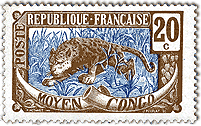 Le Nzoi aka The Bees originated sometimes in the early seventies assembled by the famous vocalist Edo Gang, who’s been in bands like Les Bantous De La Capitale and T.P.O.K. Jazz. The Edition Populaire was a label owned by Franco, and this gem of a tune ‘Declaration’ was recorded on a mobile recording studio Franco used for all his sub-labels. Never discard a Congolese track after the first minute, it starts cooking mid-way. The Bees start to sting real hard here at 1:45! Departing from a call and response duet a killer guitar riff kics in and meets the sax solo half-way. This track can be looped throughout the day and night, it has everything you need!
Le Nzoi aka The Bees originated sometimes in the early seventies assembled by the famous vocalist Edo Gang, who’s been in bands like Les Bantous De La Capitale and T.P.O.K. Jazz. The Edition Populaire was a label owned by Franco, and this gem of a tune ‘Declaration’ was recorded on a mobile recording studio Franco used for all his sub-labels. Never discard a Congolese track after the first minute, it starts cooking mid-way. The Bees start to sting real hard here at 1:45! Departing from a call and response duet a killer guitar riff kics in and meets the sax solo half-way. This track can be looped throughout the day and night, it has everything you need!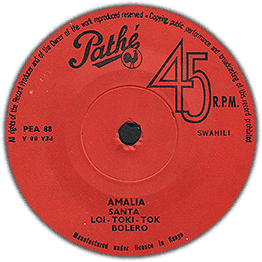
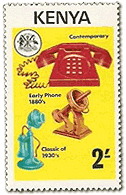 Love songs, irrespective of lyrical inspiration or language used – are endearing and captivating. They always have a way that connects to audiences with consummate ease. The song Amalia is no exception, despite its seemingly economical use of verses, astutely weaved around four simple lines that ooze with passion. Undeniably, the song-writer must have been deeply smitten and enamored by his feelings for Amalia. She is lyrically described as being “..ua langu la maisha ya dunia…” [the flower in his life on earth]. His heart yearns intensely for her charm, and love to shine through the darkness of a lifetime without her presence. The song’s laid-back and mellow refrain did likely serenade countless couples on the dance-floor, drawing lovebirds closer in tight embrace, each enveloped in the idyllic moment. Witty words like bolero [means slow-tempo] engraved on the 45rpm sleeve, were used to categorize specific tracks. Anyone with a keen ear for good music is bound to appreciate song’s adeptly structured guitar-work and rhythmic interplay, crafted during what was a possibly riveting recording session. On the flip side, Lakusema Mimi Sina – loosely translates in English as having nothing to say, steps up the tempo a notch higher but lyrics maintain the quest-for-love theme. Notably, either track bears less or minimal foreign influences – a tactful departure from the commonplace feature for most bands of the era. There is hardly any pronounced James Brown overtones on the trend-setting
Love songs, irrespective of lyrical inspiration or language used – are endearing and captivating. They always have a way that connects to audiences with consummate ease. The song Amalia is no exception, despite its seemingly economical use of verses, astutely weaved around four simple lines that ooze with passion. Undeniably, the song-writer must have been deeply smitten and enamored by his feelings for Amalia. She is lyrically described as being “..ua langu la maisha ya dunia…” [the flower in his life on earth]. His heart yearns intensely for her charm, and love to shine through the darkness of a lifetime without her presence. The song’s laid-back and mellow refrain did likely serenade countless couples on the dance-floor, drawing lovebirds closer in tight embrace, each enveloped in the idyllic moment. Witty words like bolero [means slow-tempo] engraved on the 45rpm sleeve, were used to categorize specific tracks. Anyone with a keen ear for good music is bound to appreciate song’s adeptly structured guitar-work and rhythmic interplay, crafted during what was a possibly riveting recording session. On the flip side, Lakusema Mimi Sina – loosely translates in English as having nothing to say, steps up the tempo a notch higher but lyrics maintain the quest-for-love theme. Notably, either track bears less or minimal foreign influences – a tactful departure from the commonplace feature for most bands of the era. There is hardly any pronounced James Brown overtones on the trend-setting 
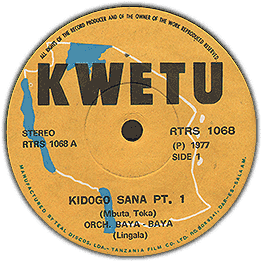
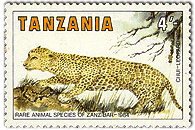 In times of “Feelabration” here at Afro7, we’ve tried to trace the Afrobeat sound in the East and Central Africa. Are there any musicians from Kenya, Tanzania or Congo that can match the prowess and sound of Nigerias Fela Kuti and his counterparts? The closest we come to trace this sound is Johnny Bokelo’s
In times of “Feelabration” here at Afro7, we’ve tried to trace the Afrobeat sound in the East and Central Africa. Are there any musicians from Kenya, Tanzania or Congo that can match the prowess and sound of Nigerias Fela Kuti and his counterparts? The closest we come to trace this sound is Johnny Bokelo’s 
 Kenya is renowned for its cross-breed of benga and rhumba rhythms. But listening to What Is It [That You Want] and My Everything – cut circa 1978 – these double-sided 45inch single tracks seem somewhat misplaced categorized as ‘Kenyan’ songs. That the funky and indisputably bouncy, disco pop-groove recordings were pressed in Nairobi during late 1970s, is a glaring pointer to the regional showbiz capital being a bedrock of diverse musical influences. Foreign pop music saturated playlists on then sole national radio broadcaster – with sprinklings of local songs accorded sporadic airplay. These formative twin tracks are credited to composer Abdalla ‘Dala’ Hamisi – who had just joined Mombasa Roots band alongside Ahmed ‘Emil’ Juma [both formerly affiliated to defunct Mombasa Vikings] and Tamrat Kabede [drums]. The group is arguably among most consistent bands plying their musical trade along Kenya’s Coastal strip. Their informal gigs began way back during mid 70s and one can still encounter the ‘Roots’ engaged in regular or private performances on evenings or weekends, often serving up covers and original cuts. The group prides itself as “.. a live and dancing band for all occasions..” Much like other musical outfits from the coast, the band formed in 1977, started out as a family affair. Its original line–up comprised the ‘Juma Brothers’ – Saeed [manager], Suleiman [keyboards], Ebrahim [guitarist] and then Ahmed ‘Emil’ [sax/vocals/guitar], who came on board later on.
Kenya is renowned for its cross-breed of benga and rhumba rhythms. But listening to What Is It [That You Want] and My Everything – cut circa 1978 – these double-sided 45inch single tracks seem somewhat misplaced categorized as ‘Kenyan’ songs. That the funky and indisputably bouncy, disco pop-groove recordings were pressed in Nairobi during late 1970s, is a glaring pointer to the regional showbiz capital being a bedrock of diverse musical influences. Foreign pop music saturated playlists on then sole national radio broadcaster – with sprinklings of local songs accorded sporadic airplay. These formative twin tracks are credited to composer Abdalla ‘Dala’ Hamisi – who had just joined Mombasa Roots band alongside Ahmed ‘Emil’ Juma [both formerly affiliated to defunct Mombasa Vikings] and Tamrat Kabede [drums]. The group is arguably among most consistent bands plying their musical trade along Kenya’s Coastal strip. Their informal gigs began way back during mid 70s and one can still encounter the ‘Roots’ engaged in regular or private performances on evenings or weekends, often serving up covers and original cuts. The group prides itself as “.. a live and dancing band for all occasions..” Much like other musical outfits from the coast, the band formed in 1977, started out as a family affair. Its original line–up comprised the ‘Juma Brothers’ – Saeed [manager], Suleiman [keyboards], Ebrahim [guitarist] and then Ahmed ‘Emil’ [sax/vocals/guitar], who came on board later on.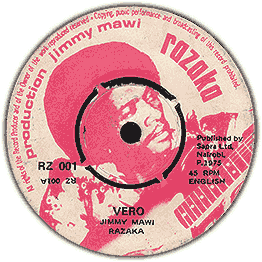
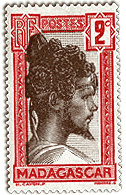 As early as 1950s, electric guitars were a phenomenon in the Madagascar islands. In subsequent years, it was typical for lead guitarists to layer their strumming with dazzling riffs on a song hurtling along a frantic pace. This could have been the basis which likely influenced the late Jimmy Mawi’s style, long before he packed his bags destined for the Kenyan capital where he pitched tent in the mid 70s. Unwittingly, he was just coming ‘back home’ as at some point – Madagascar supposedly opted to break away from East Africa’s fold. More significantly, the islands have on instances been described as the country “..where old rock albums go to die..” This uncanny aphorism perhaps resonates with the groove that infuses hard-to-find, rare – until recently, handful tracks credited to Mawi. The not-so-popular Madagascan guitarist virtuoso’s insistent dance-frenzied, Afro-funk singles
As early as 1950s, electric guitars were a phenomenon in the Madagascar islands. In subsequent years, it was typical for lead guitarists to layer their strumming with dazzling riffs on a song hurtling along a frantic pace. This could have been the basis which likely influenced the late Jimmy Mawi’s style, long before he packed his bags destined for the Kenyan capital where he pitched tent in the mid 70s. Unwittingly, he was just coming ‘back home’ as at some point – Madagascar supposedly opted to break away from East Africa’s fold. More significantly, the islands have on instances been described as the country “..where old rock albums go to die..” This uncanny aphorism perhaps resonates with the groove that infuses hard-to-find, rare – until recently, handful tracks credited to Mawi. The not-so-popular Madagascan guitarist virtuoso’s insistent dance-frenzied, Afro-funk singles 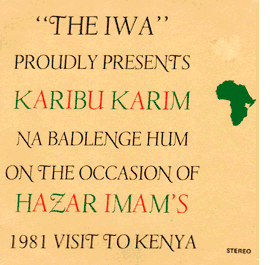
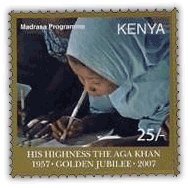 Hazar Imam or
Hazar Imam or 

 Famous band from Tanzania, this release was before they changed their name to DDC Mlimani Park Orchestra after a sponsor deal. Notice the name typo done by the Kenyan label press. Read Werner Graebner
Famous band from Tanzania, this release was before they changed their name to DDC Mlimani Park Orchestra after a sponsor deal. Notice the name typo done by the Kenyan label press. Read Werner Graebner 

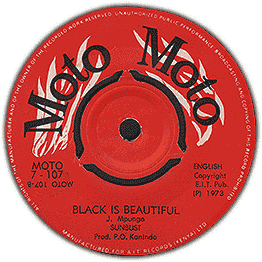
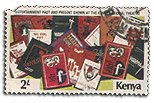 MOTO MOTO
MOTO MOTO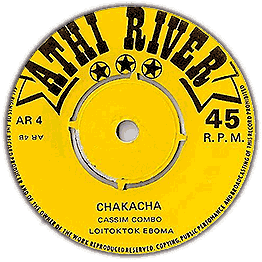
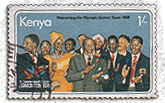 So here’s my absolute favorite kenyan 45. It’s actually a very odd and obscure afro soul masterpiece, with the catchy and hypnotic vocals ‘Chakacha… Mombassa’ that does the job… what else do you need? Maybe some handclap with that? Yes indeed! This 45 pressed on ultra rare kenya label
So here’s my absolute favorite kenyan 45. It’s actually a very odd and obscure afro soul masterpiece, with the catchy and hypnotic vocals ‘Chakacha… Mombassa’ that does the job… what else do you need? Maybe some handclap with that? Yes indeed! This 45 pressed on ultra rare kenya label 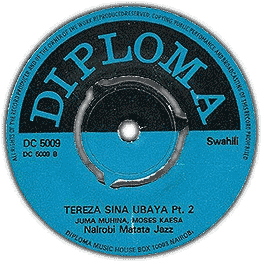
 A personal favorite from the mighty Nairobi Matata Jazz catalogue that truly showcase how tight they where back in the days. This Swahili number pretty much has it all for me, a bouncy bassline, superb breakdowns, fierce guitarlines plus a razor sharp rhythm section to match.
A personal favorite from the mighty Nairobi Matata Jazz catalogue that truly showcase how tight they where back in the days. This Swahili number pretty much has it all for me, a bouncy bassline, superb breakdowns, fierce guitarlines plus a razor sharp rhythm section to match. 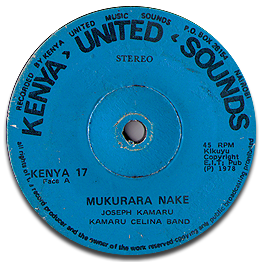
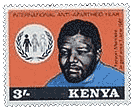
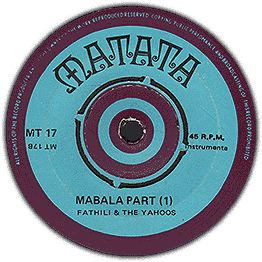
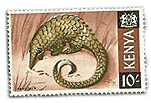 Dug up by
Dug up by 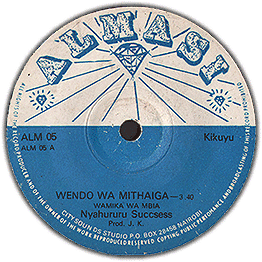
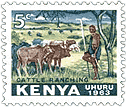

 Finally a track by the legendary Kenyan military band Maroon Commandos, ‘Adeh Deh’ delivers in afro-pop fashion with a pinch of reggae in the mix. With a catchy sing-along lyrics and a sweet feel-good melody. A significant horn section sets the pace of the tune. If its a Maroon Commandos track, expect killer horns! Formed in 1970 by the legendary band leader Habel Kifoto, its military band origins quickly established the group and landed a deal with Polydor in 1971. A success story that landed a string of hits over a span of 20 years. Several 70’ties tunes from the Maroons will be featured on this blog in the coming months
Finally a track by the legendary Kenyan military band Maroon Commandos, ‘Adeh Deh’ delivers in afro-pop fashion with a pinch of reggae in the mix. With a catchy sing-along lyrics and a sweet feel-good melody. A significant horn section sets the pace of the tune. If its a Maroon Commandos track, expect killer horns! Formed in 1970 by the legendary band leader Habel Kifoto, its military band origins quickly established the group and landed a deal with Polydor in 1971. A success story that landed a string of hits over a span of 20 years. Several 70’ties tunes from the Maroons will be featured on this blog in the coming months
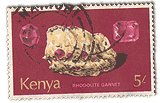 You can image what kind of influence Manu Dibango’s mega hit ‘SOUL MAKOSSA’ had on this slice of East African Disco funk. In typical Kenyan fashion, the common phrase “ASANTE SANA” is used repeatedly in the refrain. Meaning “Thank you very much” and with the included cheeky female sexual groans you can do your own further conclusions on the lyrics. Both sides in one mix. Enjoy!
You can image what kind of influence Manu Dibango’s mega hit ‘SOUL MAKOSSA’ had on this slice of East African Disco funk. In typical Kenyan fashion, the common phrase “ASANTE SANA” is used repeatedly in the refrain. Meaning “Thank you very much” and with the included cheeky female sexual groans you can do your own further conclusions on the lyrics. Both sides in one mix. Enjoy!
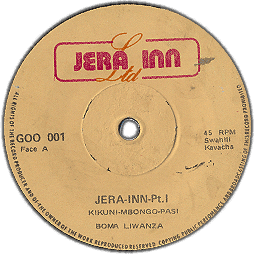
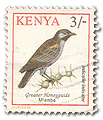
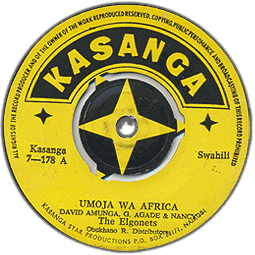
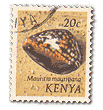 A sweet vocal number by the Elgonets, a group that had quite a few releases on different labels. Listen to the great driving guitar/drum shuffle beat that lays the mood for the crooner ending the track; “God bless Africa, Africa we love, with wild animals, with oceans and woods, god bless the continent Africa, Kilimanjaro and Mt. Kenya, use your bow and your machete and guard it. The togetherness of Africa is worth great goals. Look at it and what it offers, wild animals, lions, crocodiles ..” Thanks to Irine Nzungula for the translation.
A sweet vocal number by the Elgonets, a group that had quite a few releases on different labels. Listen to the great driving guitar/drum shuffle beat that lays the mood for the crooner ending the track; “God bless Africa, Africa we love, with wild animals, with oceans and woods, god bless the continent Africa, Kilimanjaro and Mt. Kenya, use your bow and your machete and guard it. The togetherness of Africa is worth great goals. Look at it and what it offers, wild animals, lions, crocodiles ..” Thanks to Irine Nzungula for the translation.
 Probably a hit song, as this is one of the more common Ahma singles. Appears to be the Greece pressing without the
Probably a hit song, as this is one of the more common Ahma singles. Appears to be the Greece pressing without the 

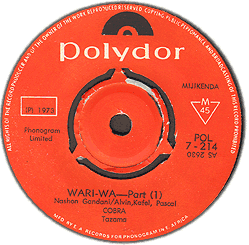







 It’s late 1980. Imagine yourself sitting in a local bar downtown Harare with a cold
It’s late 1980. Imagine yourself sitting in a local bar downtown Harare with a cold 
 We haven’t found any information on the label nor the artist here, looks like a private one off. Great label design, is
We haven’t found any information on the label nor the artist here, looks like a private one off. Great label design, is 
 We have been up and down the coast of Kenya’s Swahili land scouting for records but we never came across this little 45. It was just a few years ago tropical master digger Rickard Masip turned up a copy in his own homeland of Sweden. Obviously a souvenir brought back from the
We have been up and down the coast of Kenya’s Swahili land scouting for records but we never came across this little 45. It was just a few years ago tropical master digger Rickard Masip turned up a copy in his own homeland of Sweden. Obviously a souvenir brought back from the 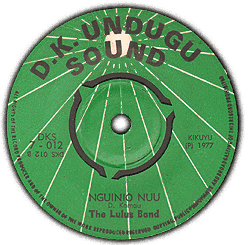
 One of many Lulu’s band singles. A prolific Kikuyu group that recorded for several labels, the groups private D.K. Undugu Sounds was run by the groups leader Daniel Kamau. Expect excellent loud pressing and tight production, simple funky aural esthetics’s as tight drumming, catchy vocals and a thousand dollar guitar riff! Perfect for the dancefloors of 2012.
One of many Lulu’s band singles. A prolific Kikuyu group that recorded for several labels, the groups private D.K. Undugu Sounds was run by the groups leader Daniel Kamau. Expect excellent loud pressing and tight production, simple funky aural esthetics’s as tight drumming, catchy vocals and a thousand dollar guitar riff! Perfect for the dancefloors of 2012.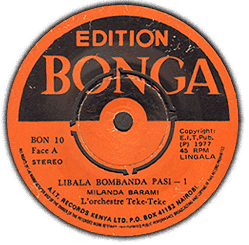

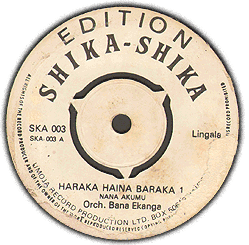




 If we got our facts straight ‘L’orchestre Masantula’ is a Tanzanian group, released on an AIT subsidiary label. ‘SAUDA’ A nice traditional track with a nice uplifting edge: driving percussive backing, guitar, sax and cool chorus. Curious about the message of the song we had to consult with our man in Nairobi, unfortunately he lost his mobile phone so we will have to wait to get the lyrics translations sorted out. Anyways we’ve merged both sides of the vinyl platter so enjoy the whole track! If you like this track we suggest you buy it, it was compiled on
If we got our facts straight ‘L’orchestre Masantula’ is a Tanzanian group, released on an AIT subsidiary label. ‘SAUDA’ A nice traditional track with a nice uplifting edge: driving percussive backing, guitar, sax and cool chorus. Curious about the message of the song we had to consult with our man in Nairobi, unfortunately he lost his mobile phone so we will have to wait to get the lyrics translations sorted out. Anyways we’ve merged both sides of the vinyl platter so enjoy the whole track! If you like this track we suggest you buy it, it was compiled on 
 Massive thanks to
Massive thanks to 
 So it wouldn’t be long before we featured our first Ethiopian Track. Big thanks to our man Vemund in Addis for sorting out a trade. Mahmoud Ahmed a veteran on the Ethiopian scene for nearly five decades delivers here a great mellow soulful performance, backed up with a great rhodes lick and horn section by the Dahlack Band. Oozing with excellence and released on his own private label Mahmoud TV & Radio house. Again we’d love to hear the meaning of the lyrics, please post if you have something to share. [audio:http://afroseven.net/songs/Mahmoud-Ahmed-Yefikir-Woha-Temu.mp3]
So it wouldn’t be long before we featured our first Ethiopian Track. Big thanks to our man Vemund in Addis for sorting out a trade. Mahmoud Ahmed a veteran on the Ethiopian scene for nearly five decades delivers here a great mellow soulful performance, backed up with a great rhodes lick and horn section by the Dahlack Band. Oozing with excellence and released on his own private label Mahmoud TV & Radio house. Again we’d love to hear the meaning of the lyrics, please post if you have something to share. [audio:http://afroseven.net/songs/Mahmoud-Ahmed-Yefikir-Woha-Temu.mp3]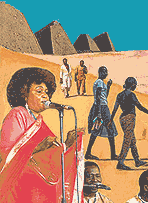
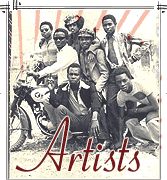














😎😎😎
A lovely song indeed...he composed a wonderful song for me too
The song is more commonly known as "Bel Ami" by Papa Noel.
very good soothing music. good rhythm and bass guitar.
Very good nostalgic music of olden times. RIP Monyoncho bwa Araka.